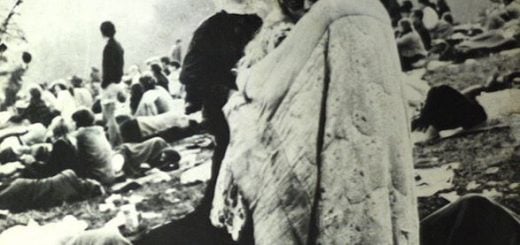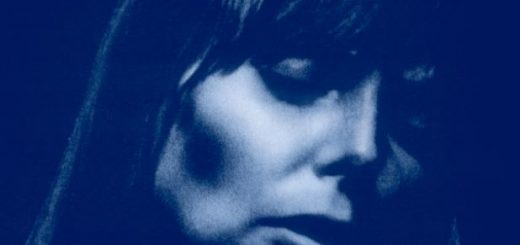Joni Mitchell’s “Big Yellow Taxi” Lyrics Meaning
The era that “Big Yellow Taxi” came out, the year 1970 in particular, was one in which musicians were very environmentally-conscious. This was largely due to America experiencing a couple of ecological disasters which made people more blatantly aware of just how devastating the artificial actions of man can be on the natural world.
But “Big Yellow Taxi” does not owe its conception to those events per se. Rather Joni Mitchell visited Hawaii – by all accounts a tropical paradise – in 1969. And in her eyes, she witnessed what she deemed to be an ecological disaster itself.
That is said paradise was “paved” in the name of “put(ting) up a parking lot”. And such observations not only allude to Hawaii. For even in L.A., the home of the American music industry, she was apparently able to notice similar actions going on. And this classic accordingly serves largely as an exercise in musical activism.
Song’s Verses
Joni Mitchell uses the first two verses to criticize the act of destroying nature in the name of modernization. In the third verse she addresses DDT, a powerful insecticide which was the GMO of its day. In other words, it is quite poisonous, and when the public became aware of its widespread usage they were resultantly alarmed. So the songstress also takes up the cause by telling farmers to “put away the DDT now”.
“Hey farmer, farmer, put away the DDT now
Give me spots on my apples
But leave me the birds and the bees, please”
It is only during the fourth verse of this song when, if only for a brief moment, its subject changes. This time around Joni is singing of a literal “big yellow taxi” when comes in and swoops her “old man”, i.e. her boyfriend, away.
There have been two interpretations of said automobile. One is that it actually points to the police cars of the Toronto police department, which at the time were similarly colored (Mitchell herself is from Canada). Thus the implication would be that the “old man” got arrested. However, the more common interpretation is more along the lines of the singer’s lover just deserting her via a taxi.
And just to note, that is the only time a “big yellow taxi” is ever mentioned in the lyrics. So Joni considered that romance-related event pressing enough to include it in a song which otherwise has nothing to do with her personal life. For the most part, what she is actually doing throughout is calling on the general audience to recognize and to some extent act against the environmental degradation she sees going on all around.
“They took all the trees
Put ’em in a tree museum
And they charged the people
A dollar and a half just to see ’em”
Are there any literary devices used in “Big Yellow Taxi”?
Yes. The song contains an alliteration in its chorus. An alliteration happens when a writer makes use of the same consonant sound in two or more nearby words. For example: “Peter Piper picked a peck of pickled peppers”.
In the chorus of “Big Yellow Taxi”, we find an alliteration in the form of the following: “They paved paradise and put up a parking lot”
When did “Big Yellow Taxi” come out?
This track is from Joni Mitchell’s third album – a project titled “Ladies of the Canyon”. The listed release date of the track is on 1 January 1970. It actually came out prior to the album itself and subsequently served as its lead and only single. And the labels behind the track are Reprise Records and Warner Bros. Records.
Did Joni Mitchell write “Big Yellow Taxi”?
Yes. Mitchell wrote and produced this track herself.
Song’s Success
Originally this song reached an impressive 11th place on the UK Singles Chart. It also made it onto the Billboard Hot 100 in the United States. And it did better on the Hot 100 a second time around, when a live rendition of the tune was released in 1974.
According to Mitchell, her original rendition of the tune only blew up in Hawaii itself upon being first released. Then, as Joni put it, “it took 20 years for the song to sink in to people most other places”. But sink in it did, establishing itself as sort of an American staple, or as the singer concluded “almost becom(ing) a nursery rhyme… part of pop culture”.
Indeed the song was so successful it achieved certified-gold status in the UK. And in more-contemporary times it proved to be one of the Joni Mitchell’s best-known songs – for instance being heavily sampled by Janet Jackson on her 1997 hit track “Got ‘Til It’s Gone”.
Notable Covers
Indeed a vast number of artists have covered, sampled, used or re-interpreted this song throughout the years. Some of the more-notable names on the list include the following:
- Bob Dylan (1973)
- Máire Brennan (1993)
- The Friends TV series (1996)
- Kelly Rowland (2013)
- Rita Ora (2019)
Also interesting to note is that K-pop singer J-Min also covered this song to critical acclaim in 2007. Even more noteworthy is that Harry Styles put forth his own rendition, via BBC 2, in 2020. In fact even as recently as 2005, “Big Yellow Taxi” was named a Most Performed Song at the ASCAP Pop Awards.
Very Successful Covers of “Big Yellow Taxi”
Amongst the covers that actually hit was Amy Grant’s version in 1994, which charted in a handful of nations. The Counting Crows had even greater success with Big Yellow Taxi in 2003, with their rendition charting in almost 15 countries. And a group known as The Neighborhood managed to get their version on the Hot 100 in 1970.
Music Video
A music video was made for this track, being produced by one John Wilson for the purpose of being aired on the Sonny and Cher television program during the mid-1970s. And said clip is in fact animated.
In 2018, Mitchell’s team released an official lyric video for this classic.
Summary
In all, Joni Mitchell is so disturbed by the environmental destruction she notices going on all around her. She therefore acts accordingly.
And for the record, DDT did go on to eventually to be widely outlawed in 1972.









she didn’t write it, her’s is a cover of Counting crows
Mitchell wrote this song and possesses all writing credits. Just think of it this way: Counting Crows released their version in 2002 alongside Vanessa Carlton whereas Mitchell released hers in 1970.
You’re joking right?
Her boy friend left without saying goodbye. She knew he’s gone when she heard the screen door slam.
She tied the two experiences together to emphasize how she feels, that she doesn’t know what she’s got, paradise as well as her boyfriend, until they’re gone.
Big Yellow Taxi was a warning of what was to come and is now here. I’m a product of the 60’s environmental movement. This song should be used as a rallying cry for serious change in the way we treat our planet. More than ever, one of the greatest threats facing our world today are viruses being released into the environment because of human greed and lust for power. We are messing with “mother nature” and she always wins in some way, shape, or form. Earth’s human inhabitants are obligated to keep our planet alive and well for now, and for future generations.
you did not give us any answer to our question